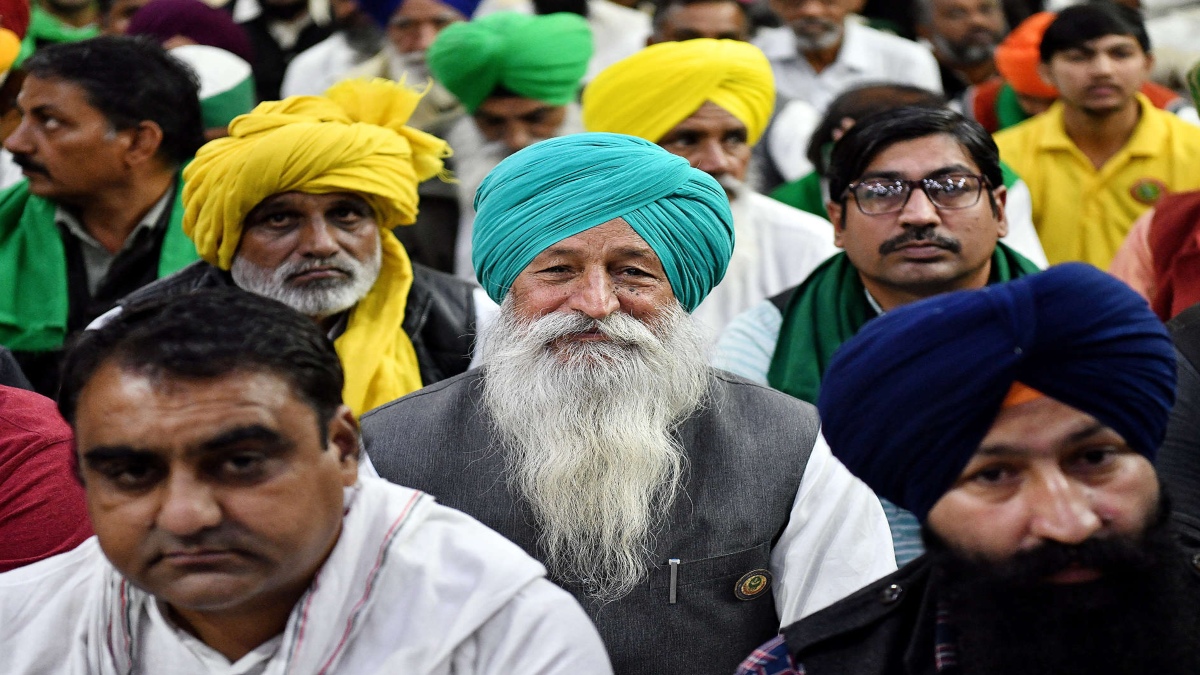
In 2015-16, the government of India had envisioned doubling farmers’ income by 2022, as India completed 75 years of its independence. The benchmark household income of 2015-16 was Rs 8,059 per month and this was promised to be doubled in real terms, taking inflation into account (GoI-2015), i.e., the target income set for 2022 was Rs 21,146 per month. At the mid-way point of the six-year period, the estimated monthly income of farm households in 2018-19 was Rs 10,218 per month in nominal terms (NSSO, 2021). Projection for the next three years adjusting for the annual agricultural growth rates gives an estimated income of Rs 12,445 per month in 2022, i.e., around 41% lower than target.
On the 75th year of India’s independence, the Indian Council of Agriculture Research (ICAR) presented success stories of around 75,000 farmers across the country whose income nearly doubled in the last 7 years. The KVKs worked on technology-centric approach to guide farmers in adopting innovative technological options and good agricultural practices. Of the total farmers adopted by the KVKs, 35% are marginal farmers owning <1 ha of land. Another 34% own 1-2 ha of land, about 19% own 2-4 ha of land and 10% own more than 10 ha of land. Remaining are landless. However, these success stories do not ensure scaling up income of 93 million agriculture households to a target average monthly income of Rs 21,000.
Agriculture GDP in nominal terms nearly doubled in the last 7 years, i.e., 2015-16 to 2021-22. The annual growth during the 7-year period was at 10%. It is obvious that if inflation in agriculture prices is high, farmers’ income at nominal prices will double in a much shorter period. Inflation in agriculture prices can also lead to increase in real farm income if agricultural prices received by farmers increase at a faster rate relative to the prices paid by the farmers, i.e., when terms of trade for agriculture improves. Past trends suggest that agriculture terms of trade measured in terms of average changes in value of agricultural products to non-agricultural products increased significantly, but it has not translated fully into growth in farm profit. The farmers’ terms of trade (ratio of output prices to input prices) since 2011-12 remained lower than agriculture terms of trade. In 2020-21, farmers terms of trade were 13% lower than agriculture terms of trade.
The goal to double farmers’ income is clearly not reached, but most importantly, we are also not in the right path both in terms of plan and dissemination. In terms of agriculture budget outlay for 2022-23, about 51% of Rs 1,325 billion is allocated on PM-KISAN–a direct payment of Rs 6,000 per year to meet immediate needs of the farmers. All states agriculture budget for 2022-23 is Rs 2401 billion, nearly double of Centre’s agriculture budget, yet the schemes that directly correlate with productivity, reduction in wastage and, therefore, higher price realisation witnessed meagre allocation. Allocation on soil and water conservation accounts for only 2% of the budget. Food storage accounts for about 8% of the total outlay.
In a recent announcement, the Union Cabinet restored the Interest Subvention Scheme (ISS) on short term agriculture loans to 1.5% for all financial institutions for lending short term agriculture-loans up to Rs 3 lakh to the farmers during FY23-FY25. Though the introduction of ISS has been one of the major policy initiatives to institutionalise agriculture credit for small and marginal farmers, it has also incentivised short-term production credit over long-term investment credit. The effects of agriculture credit growth spills over entire rural infrastructure growth which in turns generates higher income and higher household expenditure. Therefore, for sustainable development, it is critical to enhance long term credit which is key for farm investment.
Implementation of the key agriculture schemes are also trailing behind. The one lakh crore Agriculture Infrastructure Fund was announced in May 2020 as part of Atmanirbhar Bharat package. However, after nearly two years, only Rs 2,694 crore has been disbursed as loans and projects worth a total of Rs 6,700 crore sanctioned (source: Agri Infrastructure Fund website). This is dismal performance for a much-hyped package meant as a stimulus for an economy in crisis.
The Paramparagat Krishi Vikas Yojna (PKVY) scheme which was meant to promote sustainable agriculture was allocated Rs 450 crore in the previous year, but only Rs 100 crore was spent. In Budget 2022-23, PKVY as well as many other schemes have been subsumed under an expanded umbrella of Rashtriya Krishi Vikas Yojana (RKVY) with no clarity on allocation for different sub-schemes.
Higher investment in new technology generation and its effective dissemination, better infrastructure policy reforms to create efficient and competitive markets etc., were the key recommendations by the Doubling Farmers’ Income Committee to improve Terms of Trade for farmers. However, very little has been achieved so far. Clearly, to double farmers’ income, there is an urgent need to shift focus from short-term solutions to long-term and sustainable growth. To bring back government’s vision in the right track, it is important to restructure agriculture budget, prioritize on schemes that lead to higher productivity, reduction in cost and strategize for effective dissemination.
Dr Minakshi Chakraborty is an economist at Mahindra & Mahindra. She is a research professional with over 15 years of experience in quantitative and qualitative research.